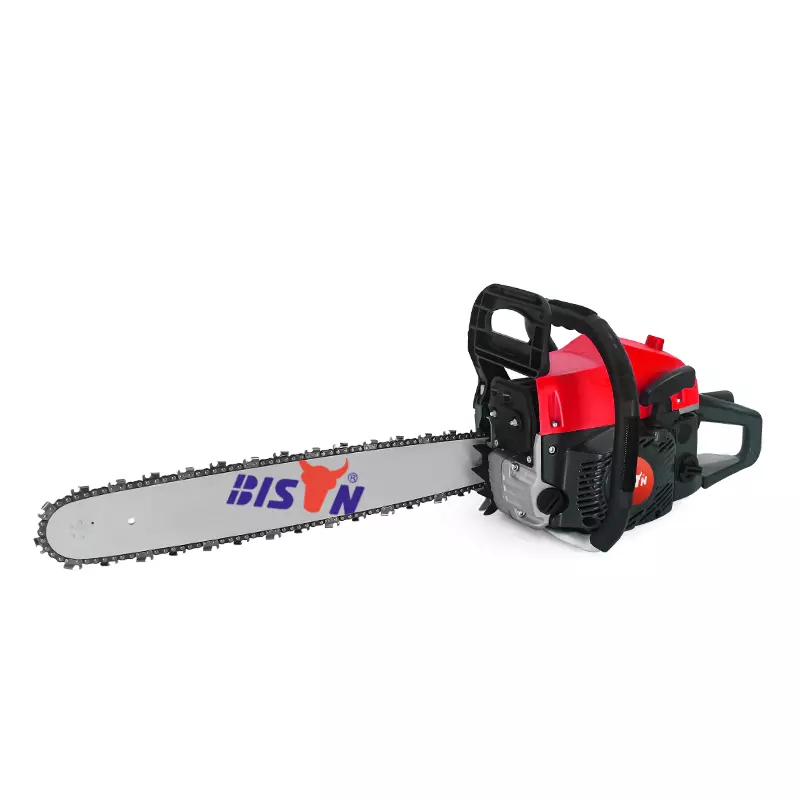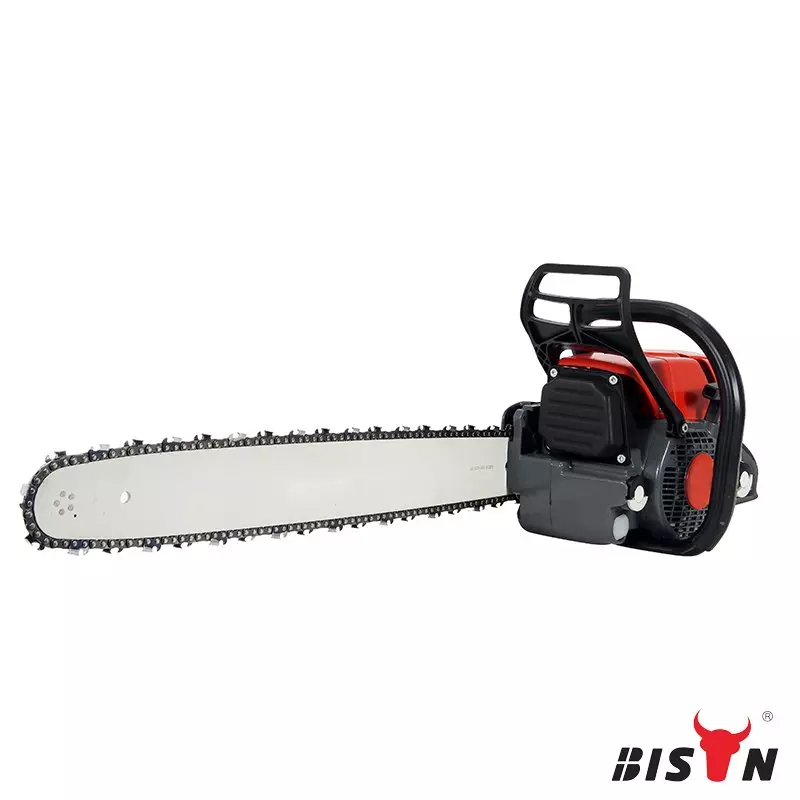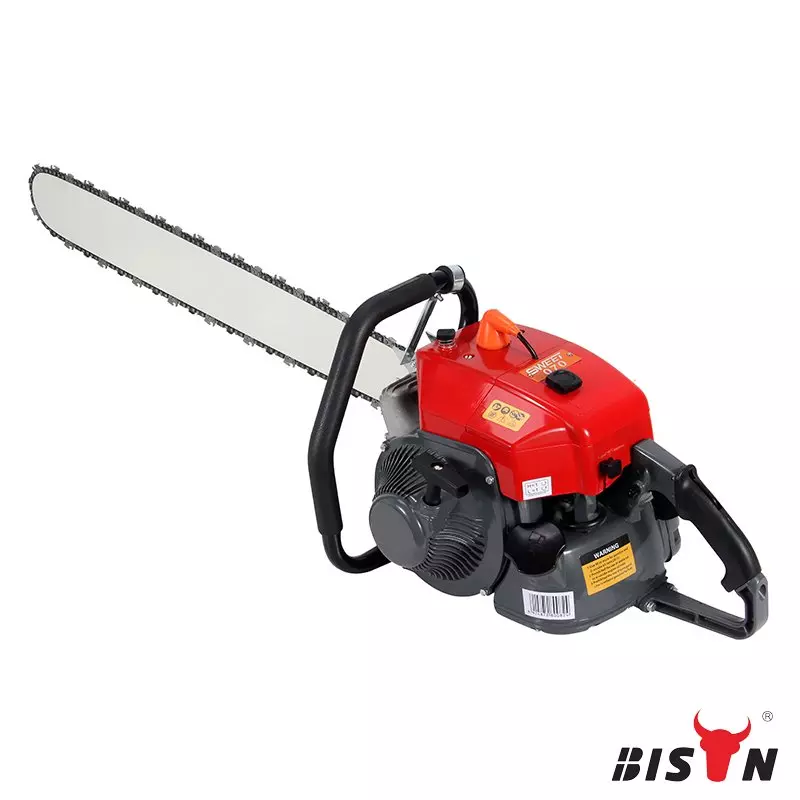A Comprehensive Guide to Safely Using BISON Chainsaws
2023-06-27
Table of content
As a leading chainsaw manufacturer in China, BISON is committed to providing top-quality products that prioritize safety and proper technique. This comprehensive guide will help you get the most out of your BISON chainsaw while ensuring you can use it safely and effectively.
Step 0: Pre-operation inspection and environmental assessment
Before starting a chainsaw, it is essential to perform a thorough inspection of the tool and assess the surroundings. This ensures your chainsaw is in good working order and helps identify potential hazards.
chainsaw inspection
Check the following components of your chainsaw before each use:
Chain Tension: Make sure the chain is properly tensioned and is securely attached to the bar.
Chain Sharpness: Verify that the chain's cutting teeth are sharp and undamaged.
Guide rods and sprockets: Inspect the guide rods and sprockets for wear or damage, and make sure the guide rods are properly lubricated.
Air filter: Check the cleanliness of the air filter and replace or clean if necessary.
Fuel and Oil Levels: Make sure the chainsaw has enough fuel and rod/chain oil.
Throttle lockout and chain brake: Test the throttle lockout and chain brake to make sure they are working properly.
Environmental Assessment
Before using a chainsaw, evaluate the area you will be working and note the following:
Potential Hazards: Remove anything in the environment that may hinder cutting, such as rocks, dirt, metal, etc.
Escape routes: Plan an escape route in case a tree or branch falls accidentally or falls in the wrong direction.
Ground Conditions: Check for uneven or slippery surfaces that could affect footing and stability when operating the chainsaw.
Weather conditions: Be alert for severe weather conditions such as strong winds, rain or snow, which can increase the risk of accidents.
By performing these pre-operation inspections and assessing your surroundings, you can help ensure safe and efficient chainsaw operation.
Step 1: Equip Yourself with Essential Safety Gear
Using a chainsaw can be risky, as with any other equipment. Before operating your BISON chainsaw, it's crucial to wear appropriate safety gear to prevent injuries. Our chainsaws are designed with user safety in mind, but proper protective equipment is still necessary:
Safety goggles: Protect your eyes from flying debris.
Hearing protection: Use earplugs or earmuffs to shield your ears from the chainsaw's loud noise.
Chainsaw chaps: These specialized pants protect your legs from accidental contact with the chain.
Sturdy gloves: Wear gloves with reinforced palms and fingers for better grip and protection.
Non-slip boots: Choose boots with steel toes and good traction to prevent slipping and protect your feet.
Step 2: Starting Your BISON Chainsaw Properly
BISON chainsaws are designed for easy starting and efficient operation. Follow these steps to start your chainsaw correctly:
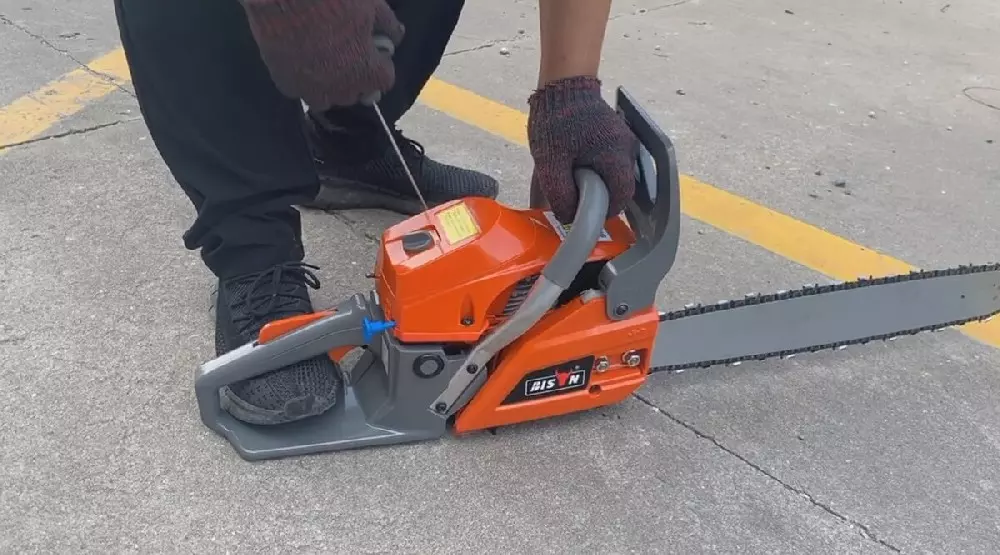
Place the chainsaw on a flat, stable surface with the chain brake engaged (push the front handguard forward).
If your BISON chainsaw has a primer bulb, press it until the fuel is visible in the bulb.
Set the choke lever to the starting position (usually marked with a symbol or the word "start").
Firmly hold the chainsaw with one hand on the rear handle and the other on the front handle, ensuring the chain isn't touching any surfaces.
Gently pull the starter cord until you feel resistance, then give it a sharp pull. Repeat this process until the engine starts.
Disengage the choke once the engine starts and let the chainsaw idle for a few seconds before using it.
Step 3: Mastering Chainsaw Techniques with Your BISON Chainsaw
Holding the Chainsaw Correctly
Stand with your feet shoulder-width apart, knees slightly bent, and body weight evenly distributed.
Hold the rear handle with your right hand and the front handle with your left hand (reverse for left-handed users).
Keep both elbows slightly bent and maintain a firm grip on both handles.
Position your body to the chainsaw's left, so you're not directly behind it, reducing the risk of injury from kickback.
Cutting Techniques
BISON chainsaws are designed for versatility and precision. Use these cutting techniques to achieve optimal results:
Bucking: Used for cutting logs into smaller pieces. Ensure the log is properly supported and not touching the ground on either side of the cut. Use a sawhorse or other support if necessary.
Felling: For cutting down trees, plan your escape route and create a notch on the tree's side facing the desired felling direction. Make a felling cut on the opposite side, slightly above the notch, until the tree starts to fall.
Limbing: To remove branches from a fallen tree, start at the base and work your way up. Cut branches from the top side, working in a downward direction.
Step 4: Shutting Down Your BISON Chainsaw Safely
Release the throttle and let the engine idle for a few seconds.
Turn off the engine by switching the ignition switch to the "off" position.
Engage the chain brake by pushing the front handguard forward.
Allow the chainsaw to cool down before storing it in a safe place, away from flammable materials.
What can a chainsaw be used for?
A chainsaw is a versatile and powerful tool that can be used for a variety of tasks in forestry, landscaping, and property maintenance. After diving into our step-by-step guide on how to use a chainsaw, it's worth understanding its potential applications. Below we’ve listed all the uses for a chainsaw:
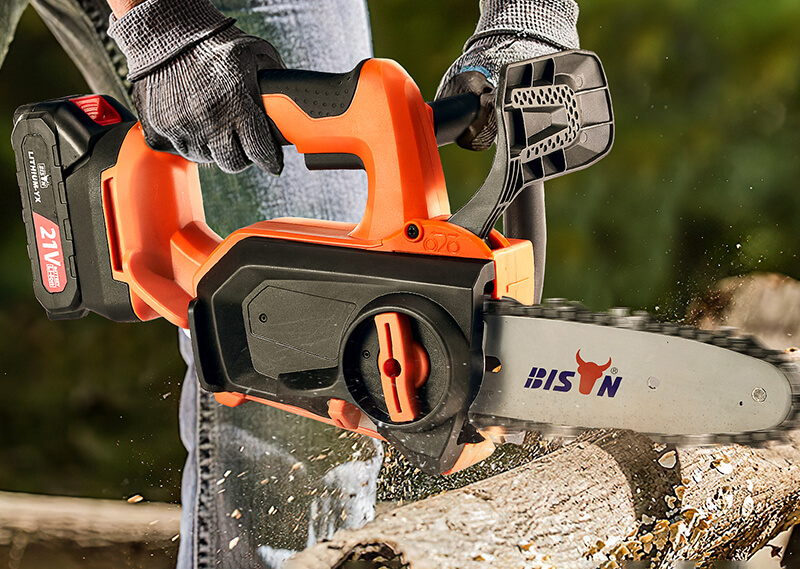
Chopping down a tree
The best tool for cutting trees and branches is a chainsaw. You can easily use a chainsaw on a ladder to remove branches because they are portable and easily reach difficult places. A good-sized chainsaw that produces the right amount of power will help you cut down trees of all sizes.
Carving wood with a chainsaw
You can use a chainsaw to create stunning pieces for your home. A handy chainsaw allows artistic homeowners to express themselves on plain logs. If you have a tree stump in the garden, you can carve it and decorate your backyard beautifully.
Use a chainsaw to chop firewood
The home has a wood-burning fireplace and cuts its firewood. With the help of a chainsaw, one can quickly get the job done in seconds and get plenty of firewood for the entire season in one cut. That’s because power tools will make getting firewood as easy as possible.
Using a chainsaw to maintain shrubs
Let’s say you want to maintain shrubs and trim hedges around your property but want to avoid paying a private landscaper. You can also do this with a chainsaw. In just minutes, carefully shape the vegetation around your home, cut shrubs to size, and more.
in conclusion
By following these steps and using proper safety equipment, you can ensure that your BISON chain saw is used safely, efficiently and satisfactorily for a variety of cutting tasks.
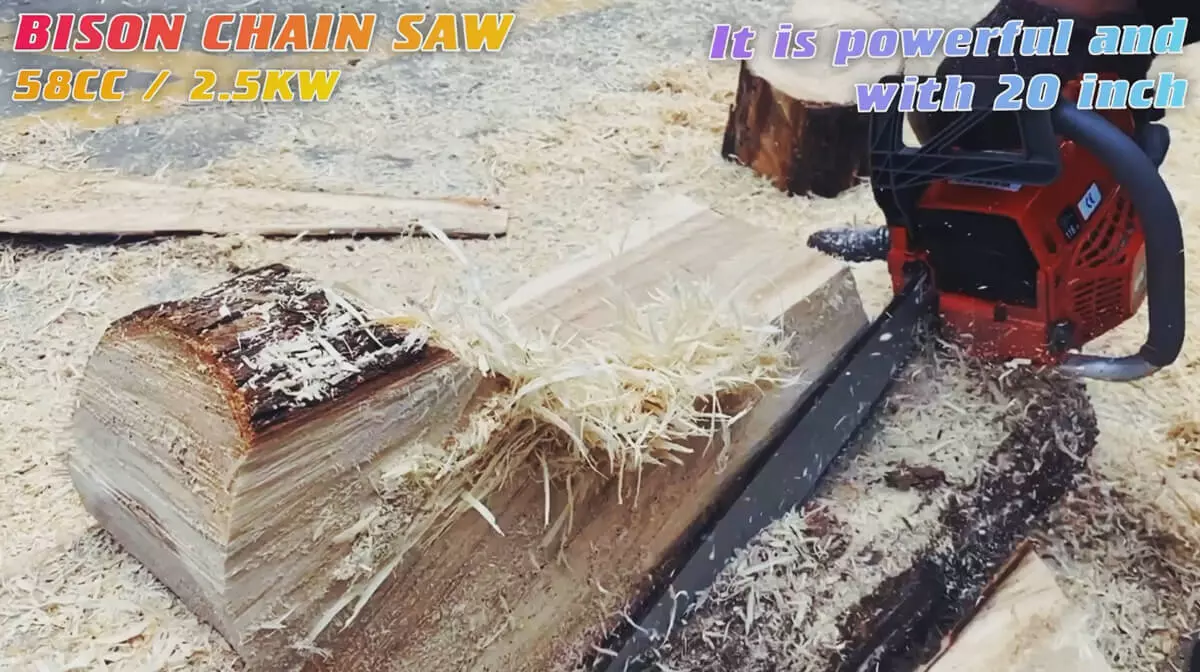
When choosing a chainsaw, consider BISON's high-quality chainsaws, designed with the user's safety, comfort and effectiveness in mind. Our chainsaws offer exceptional power, durability and ease of use, making them the perfect choice for professionals and homeowners alike. Choose one of our great models for your cutting needs and experience the difference a reliable, top-performing chainsaw can make.

